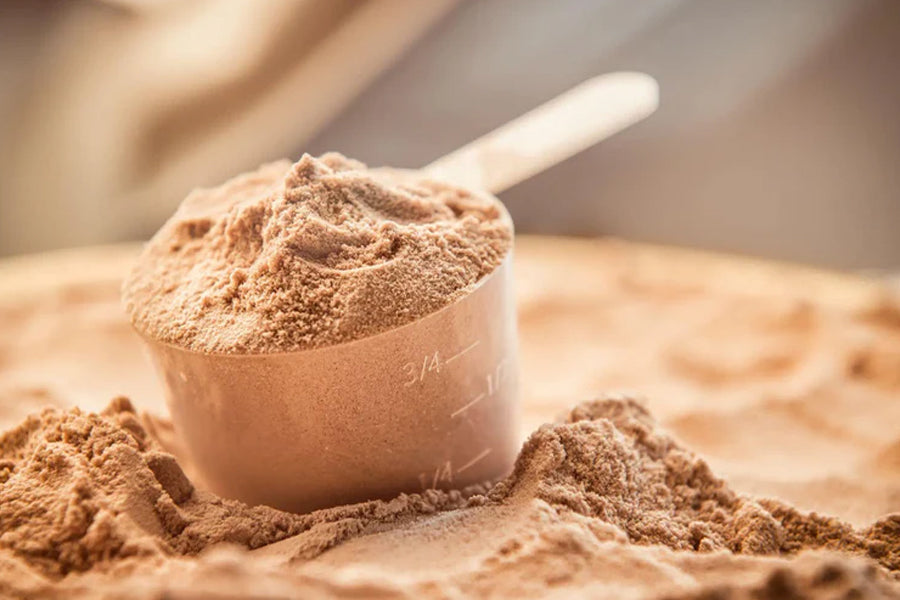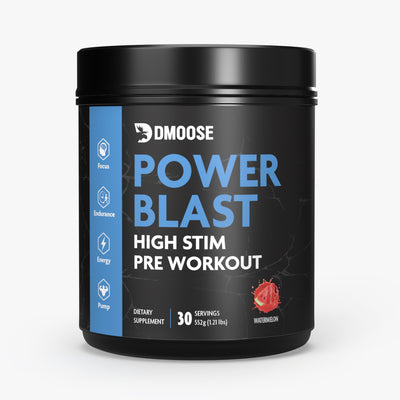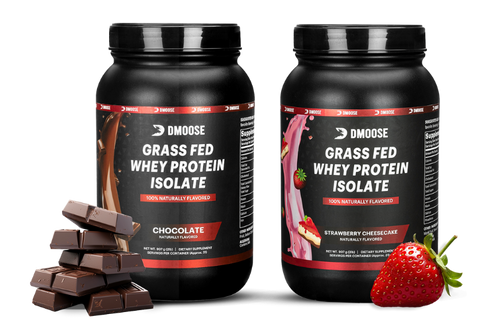Protein powder is a staple for anyone serious about their fitness goals. If you're looking to boost your protein intake, you probably already know it’s essential. But here's the question: How much protein is actually in a scoop of Whey Protein Powder?
Turns out, it’s not as simple as you think. Different brands have different scoop sizes, and some are packed higher than others. So, how do you know if you're actually hitting your protein goals or just guessing?
Don’t worry, I’ve got your back. Let’s break it down, scoop by scoop, and get you on track to those gains.
Grab your protein, and let’s get into it!
What Is a Scoop of Protein?

The term "scoop of protein" refers to the amount of protein powder that can be measured using the scoop provided with the protein supplement. However, the exact size of a scoop can vary, as it depends on the brand.
Different manufacturers offer different scoop sizes, with some providing larger scoops than others. Typically, a scoop of protein powder is used to transfer the powder into a shaker or blender bottle.
The scoop is usually included in the protein powder packaging. While the reason for the variation in scoop sizes isn't entirely clear, it likely has to do with differences in the powder's composition and density.
Why Do Scoop Sizes Vary?

Scoop sizes vary primarily due to differences in the composition and density of the protein powder. Each brand may use different ingredients, which can affect how compact or fluffy the powder is. For example, whey protein might have a different density compared to plant-based protein powders, leading to variations in scoop sizes.
Another reason for the variation is that some manufacturers may include additional ingredients, such as amino acids, vitamins, or minerals, that affect the overall volume of the powder. As a result, a scoop from one brand might measure differently than a scoop from another, even if both contain the same amount of protein.
Additionally, some companies may design their scoop sizes to promote serving sizes that match their recommended dosage, which can also contribute to the differences. Essentially, scoop sizes aren’t always standardized, and it’s important to check the packaging for accurate measurements.
Different Brands Have Different Scoops
Each protein powder brand follows its own production methods, which leads to variations in scoop sizes. Different manufacturing processes result in different scoop sizes, meaning not all protein scoops are the same across brands.
Related Article: Whey Protein: Health Benefits, Side Effects, and Precautions
What is Protein Concentration?
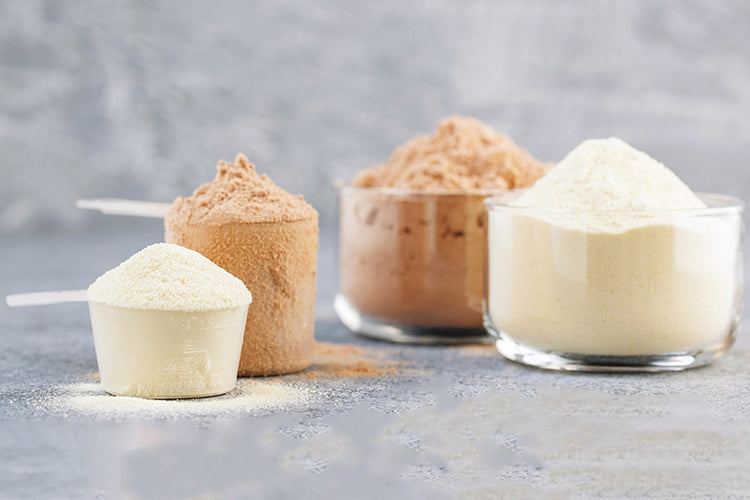
Protein concentration refers to the amount of protein in a given serving of protein powder, and this can vary from one brand to another. As a result, some protein powders may pack more protein into each scoop than others.
Typically, a scoop of protein powder contains between 25–30 grams, but the protein content within that scoop can differ. If a protein powder has a higher concentration of protein, the scoop size doesn’t need to be as large to reach the desired protein amount.
For example, a 1kg container of protein powder with a higher protein concentration might contain up to 30 smaller scoops. In this case, a 28-gram scoop may provide 24 grams of protein. In contrast, protein powders with lower protein concentrations may require a larger scoop to meet the recommended protein serving.
In this case, a scoop from a different brand might weigh 36 grams but contain only 26 grams of protein. The protein concentration in powders can also vary based on factors like processing methods, ingredient sources, and formulation.
Related Article: A Beginners Guide on Whey Protein and How It Can Help You
How to Measure 1 Scoop of Protein?
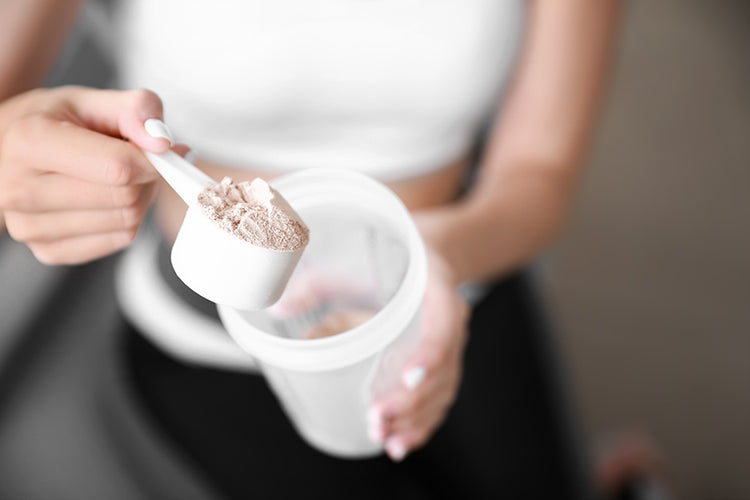
- Check the Nutrition Label: Look for the serving size and scoop information on the container's Nutrition Facts label. Most brands use two scoops per serving, so make sure to confirm the scoop size.
- Fill the Scoop: Once you know the scoop size, fill it with protein powder. If it's heaping, level it off by removing the excess using a knife or any flat object.
- Use a Food Scale (Optional): For greater accuracy, use a food weighing scale to measure the exact weight of the powder. This ensures you hit the desired amount.
- Alternative Method: If you don't have a scale, you can use tablespoons. One tablespoon is typically 15 grams, so adjust the number of tablespoons to reach the protein amount you need.
- Double-Check the Scoop Size: Always verify the scoop size for the brand you're using, as it can vary from one to another. Make sure you're using the correct scoop for that specific product.
Related Article: Top 7 Benefits of Whey Protein Powder
The Protein Powder We Recommend: DMoose Grass-Fed Whey Protein
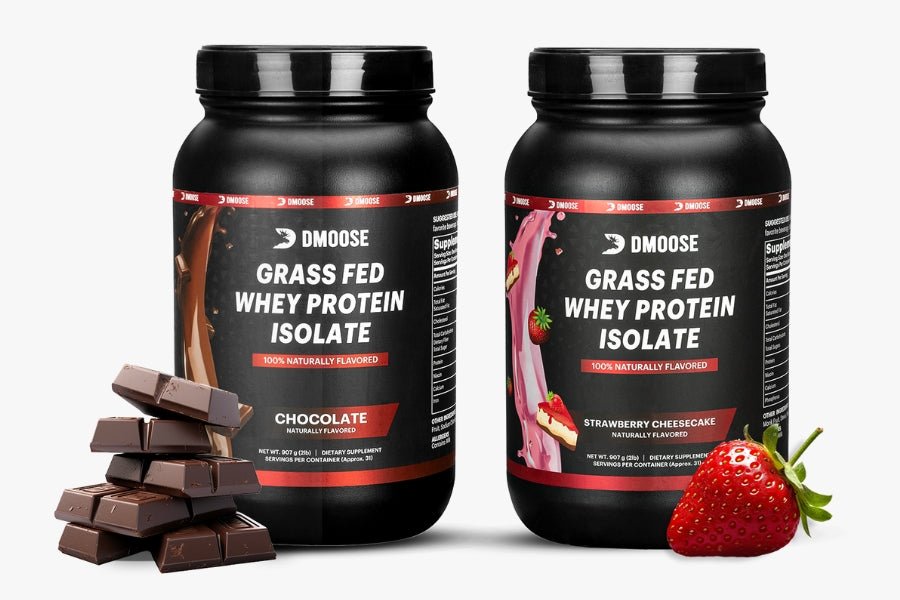
DMoose Grass Fed Whey Protein Isolate is an excellent choice for anyone serious about their fitness and nutrition. Sourced from the milk of grass-fed cows, this protein supplement delivers 20g of pure protein per serving, making it ideal for promoting muscle growth and aiding recovery.
Thanks to its low fat and lactose content, it's gentle on the stomach and a great option for those sensitive to lactose. Sweetened naturally with Monk Fruit, Stevia, and a touch of Maltodextrin, it offers a delicious taste without any artificial aftertaste.
Packed with vital amino acids and antioxidants, it helps support your overall health, making it more than just a protein boost. Choose from delicious flavours like Strawberry Cheesecake and Chocolate to enjoy a tasty, effective way to meet your protein needs.
FAQs
1. How many grams are in 1 scoop of protein powder?
A scoop typically contains 25-30 grams of protein powder, but this can vary by brand and type. Always check the label for accurate measurements.
2. How many calories are in a scoop of protein powder?
One scoop usually has 100-150 calories, but this depends on the brand and added ingredients. Check the nutrition label for specifics.
3. How to measure protein powder without a scoop?
If you don't have a scoop, use a tablespoon (about 15 grams per level spoon). You can also refer to the serving size on the label or use a shot glass (42-56 grams). For the most accuracy, a kitchen scale is recommended.
4. How many scoops of protein powder should I take daily?
The recommended intake is 1-2 scoops a day, depending on body weight, activity level, and fitness goals. Each scoop provides around 20-30 grams of protein.
Conclusion
Knowing how many grams are in a scoop of protein powder is crucial for anyone aiming to reach their fitness goals. The right amount of protein directly impacts muscle growth and recovery, so getting it right matters.
With the variation in scoop sizes and protein concentrations between brands, it can be tricky to measure the correct amount. However, by reading the Nutrition Facts label and using precise measuring tools like a food scale, you can ensure accurate servings every time.
Choosing a high-quality protein powder, such as DMoose Whey Protein Isolate, ensures you're getting 100% protein isolate with a high protein content per serving. When combined with a balanced diet and regular exercise, the right protein powder can help you achieve your fitness goals and boost overall health.



